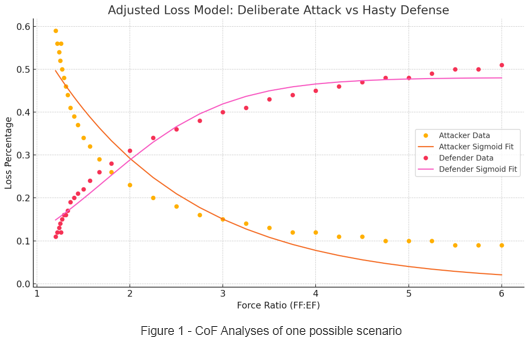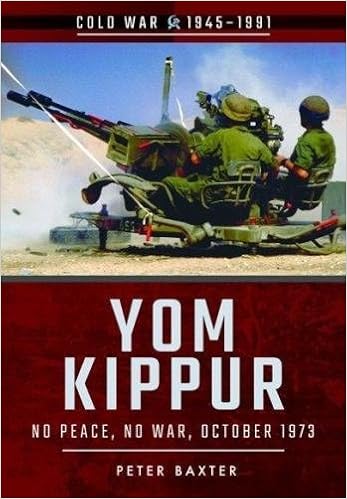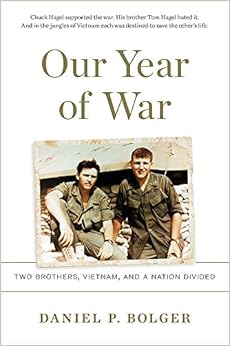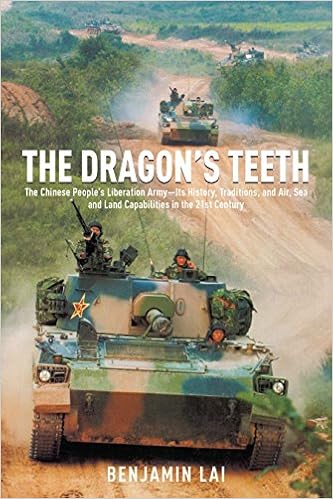Mastering the Correlation of Forces: A Practical Approach for Senior Leaders
By SGM Antonio V. M. Pires, SGM Fabio Lusiani, & Mr. Robert Shawlinski (Sergeants Major Academy)
In today’s complex operational environments, military planning demands both critical judgment and analytical rigor. Within the military decision-making process (MDMP), during Step 3—Course of Action (COA) Development—planners conduct the sub-step Assess Relative Combat Power, which involves evaluating the relative strength, capability, and effectiveness of friendly and enemy forces (Department of the Army [DA], 2024). The doctrine recognizes this assessment as an essential start point; however, a more comprehensive evaluation can be achieved through an analysis known as the Correlation of Forces (CoF).
While artificial intelligence and advanced decision-support tools can now assist in conducting such analyses, the responsibility to interpret and apply the outputs ultimately falls to senior leaders. Without a clear understanding of CoF principles, planners risk misjudging the results, potentially compromising mission success. Developing a COA with high probability of success directly depends on leaders’ ability to grasp the conceptual foundations of CoF, appreciate its dual nature as both art and science, and its critical role in the MDMP.
Decoding the Army’s Correlation of Forces Methodology
In a battlefield characterized by transparency and an accelerated tempo of war, planning an operation requires both science and art. The science involves measurable and tangible factors like movement rates, fuel consumption, and weapons effects, skills learned through formal training and analysis. The art, however, relies on experience, judgment, and creativity to make decisions in complex, human-driven environments. Effective planners understand constraints like terrain and time but also know how to adapt, take risks, and align actions with the commander’s intent. Balancing mission variables and choosing from multiple interrelated options, they craft and define flexible, informed solutions. Success comes from blending analytical precision with thoughtful, experience-based judgment (DA, 2019).
In this scenario, the CoF calculator will represent a critical capability commanders and staff could use to have a clearer understand of the situation and speed up the military planning process. The proper use of this analytical tool requires blending quantitative analysis with experienced judgment, exemplifying the importance of the intersection of art and science in military decision-making when assessing relative combat power between friendly and enemy forces leaders. While the tool provides scientifically grounded outputs based on force ratios and doctrinal templates, its true value lies in how leaders interpret and apply those results within the dynamic context of the operational environment. This balance between empirical calculation and human understanding reflects the dual nature of military planning, where precision meets intuition.
The Science Behind of the Correlation of Forces
The scientific aspect of the CoF relies on measurable variables and mathematical models to evaluate combat effectiveness. At its core, CoF attempts to quantify the relative combat power of friendly and enemy forces by analyzing factors such as unit strength, weapons capability, force ratios, and expected losses. While this method does not replace battlefield judgment, it enhances objectivity in planning and helps reduce the cognitive bias that may influence decision-making under pressure.
Force Ratios
A common approach to determining the forces necessary to accomplish a task is to use historical ratios (DA, 2024). Planners use these ratios to assess whether a force has the advantage to conduct offensive or defensive operations. A well-known historical guideline, for example, is the 3:1 ratio suggesting that attacking forces should ideally have three times the strength of the defense forces to achieve success. While this rule can be useful baseline, relying on such static ratios can be misleading.
| Friendly Mission | Position | Friendly to Enemy Ratios |
| Delay | Hasty | 1 to 6 |
| Defend | Prepared or fortified | 1 to 3 |
| Defend | Hasty | 1 to 2.5 |
| Attack | Prepared or fortified | 3 to 1 |
| Attack | Hasty | 2.5 to 1 |
| Counterattack | Flank | 1 to 1 |
| Penetration (lead element) | Prepared or fortified | 18 to 1 |
| Table 1 – Recommended planning ratios (FM 5-0 Planning and Orders Production, 2024, p. 101) |
Force ratios alone often oversimplify battlefield conditions. For instance, a comparison of three infantry battalions attacking one armored battalion technically meets the 3:1 threshold. However, this calculation fails to consider that an armored battalion possesses significantly greater firepower, protection, and mobility than light infantry. In this scenario, the raw numerical advantage does not translate to actual combat power superiority. Therefore, planners must go beyond traditional ratios and assess the relative combat power of each unit based on its type, composition, readiness, and mission suitability. This is where the concept of Force Equivalent (FE) becomes essential, allowing planners to assign weights values to different units and derive a more realistic correlation of forces.
Force Equivalent
To illustrate the limitations of raw ratios and the benefits of using FE, consider the following simplified example. The FE values shown here are not doctrinal but are assigned solely to demonstrate how unit type and capability impact CoF calculations:
| Unit Type | Quantity | Strength | FE per Unit | Total FE |
| Light Infantry BN | 3 | 100% | 1.0 | 3.0 |
| Armored BN | 1 | 100% | 4.0 | 4.0 |
| Table 2 – Fictional example of ratios analysis |
At first glance, the friendly force of three light infantry battalions meets the conventional 3:1 attacker-to-defender ratio against one armored battalion. However, when applying illustrative totals FE values to account for unit capability, this results in a true ratio of 0.75:1, reveling that the attacking force is actually outmatched. This example underscores a critical planning consideration: numerical superiority alone is insufficient. Without accounting for differences in firepower, protection, and mobility, planners risk overestimating combat effectiveness. By incorporating FE into CoF analysis, leaders can more evaluate mission feasibility and develop realistic, supportable courses of action.
The Art behind of the Correlation of Forces
The art of interpretation plays a critical role in how commanders and planners use the CoF calculator during military planning. While the analytical tool provides a scientifically grounded assessment of relative combat power, based on troop strength, weapons capabilities, and other quantifiable inputs, its results are only one piece of a much larger planning puzzle. Effective interpretation requires situating the CoF output within the broader context of the mission variables, commonly known by the acronym METT-TC: mission, enemy, terrain and weather, troops and support available, time available, and civil considerations (DA, 2019a). Each of these variables introduces distinction that raw numbers alone cannot address.
For instance, while a CoF ratio might suggest a favorable force advantage, this could be deeply impacted or negated by restrictive terrain, poor weather conditions, or a highly mobile and adaptive enemy. Equally, history as proven as a numerically inferior force may hold a significant advantage if it possesses superior positioning, morale, or intelligence. Therefore, the CoF calculator must be used as a decision-support tool and not as a decision-making device. Commanders must apply judgment, experience, and critical thinking to interpret whether the numbers translate into a realistic tactical or operational advantage. This process relies heavily on intuition developed through repeated exposure to complex operational environments, as well as a deep understanding of the enemy’s capabilities, doctrine, and likely COA (Spurlin & Green, 2017; DA, 2025). Additionally, interpretation involves understanding the human dimension of warfare. Combat is not a sterile contest of numbers, it is driven and shape by will, perception, fatigue, and adaptability (DA, 2019b).
The art of planning requires leaders to evaluate not just whether they can act, but whether they should, and how those actions will be perceived and countered. This is especially important when developing COAs, where planners must account for both friendly and enemy reactions within a constantly evolving battlefield (Razma, 2022). Furthermore, the art of interpretation bridges the gap between doctrine and innovation. While the science of planning provides structure through established techniques, the art challenges leaders to tailor those systems to unique circumstances. For example, a commander might choose to accept risk in one domain to exploit an opportunity in another, even if the CoF data does not reflect a clear advantage. Such decisions are rooted in professional judgment, not just formulas (DA, 2019c). The CoF calculator is a powerful tool within the military planning process, but its true value emerges through skilled interpretation. Effective commanders and staff officers blend the science of quantifiable analysis with the art of applying experience, intuition, and judgment to ensure that plans are not only technically sound but also contextually appropriate and operationally effective.
Correlation of Forces Calculator
Despite the doctrinal emphasis on assessing relative combat power, the U.S. Army does not prescribe a standardized or formula to quantify the correlation of forces. This creates a gap between conceptual guidance and practical application, one that can lead to inconsistent or oversimplified assessments. To address this, some tolls, such as spreadsheets, have been developed to assist planners in visualizing force relationships and estimating potential outcomes. One example is the MDMP Trainer app, which includes a CoF calculator to support decision-making the planning process (Pires, 2025).
The calculator enables users to input key variables for both friendly and enemy forces involved in an engagement, including unit name (e.g., 2-7 CAV), number of units, operational strength (percentage of unit status), and FE (value based on the planner’s military judgment). Using these inputs, the tool computes the force ratio between friendly and enemy forces and applies a scenario-specific loss estimation model (e.g., deliberate attack, hasty defense, meeting engagement), providing as results a realistic force ratio and estimates losses for both sides.
The flexibility to define FE values reinforces the importance of contextual understanding and professional judgment, rather than relying on rigid templates. While technological tools can enhance planning, they do not replace the need for critical thinking and leadership analysis. Instead, they serve as aids to promote transparency, consistency, and structured reasoning, key qualities in a sound military decision-making process.
To further illustrate the utility of the CoF calculator, the figure below presents an example of how estimated losses vary according to the realistic force ratio between friendly and enemy forces. The data reflects a simulated scenario of a deliberate attack against a hasty defense, generated using the loss estimation model built into the CoF calculator within MDMP Trainer app (Pires, 2025). As shown, the fitted trend lines indicated that as the force ratio increases, friendly (attacker) losses decline, while enemy (defender) losses rise, supporting doctrinal expectations and reinforcing the importance of mass in offensive operations. It is important to note that this model reflects the approach used specifically in the MDMP Trainer app, and other tools may use different assumptions or mathematical functions.

Correlation of Forces Calculator Applicability
The CoF calculator aligns directly with several steps of the Army detailed planning process, known as MDMP described in chapter 5 of Field Manual 5-0 (FM 5-0): Planning and Order Production (DA, 2024). This tool offers planners a structured, quantifiable method to assess force relationships. While it does not replace military judgment, it enhances analytical rigor and supports commanders in developing, analyzing, and comparing COAs.
MDMP Step 3 – COA Development
During the COA Development step, planners conduct an initial comparison of relative combat power. The CoF calculator can support this sub-step by providing an objective ratio of maneuver and fire support forces based on unit type, strength, and assigned FE. This allows the staff to validate whether a proposed COA has a realistic chance of success, identify potential capability gaps, or explore alternate force compositions early in the planning process.
MDMP Step 4 – COA Analysis
In COA analysis, the planners conduct wargaming to assess how each proposed COA performs under expected conditions. CoF can be applied here as a modeling and simulations technique to generate quantitative estimates of likely outcomes. According to the FM 5-0, “The advantages of this technique include the ability of modeling and simulation to provide quantitative data to inform decision making” (DA, 2024, p. 111).
A practical application of CoF in wargaming is to assess losses or outcomes at the end of the reaction phase, before counteraction. As Spurlin and Green (2017) explained, “Based on the outcomes, planners may reallocate forces to create a more favorable outcome—or accept risks if results remain unchanged” (p. 3). The calculator can assist in adjusting unit posture, reinforcements, or resource allocations in real time during dynamic portion of planning.
MDMP Step 5 – COA Comparison
Finally, in COA comparison, the CoF results may inform the comparative analysis of multiple COAs by quantifying losses, highlighting force imbalances, or revealing decisive points. As FM 5-0 stated, “The staff uses any technique that helps develop those key outputs and recommendations that assist the commander in making the best decision” (DA, 2024, p. 129). Integrating CoF data into comparison matrices or decision support tools allows for a more informed selection process, grounded in both qualitative assessment and quantifiable indicators.
Conclusion
Mastering the Correlation of Forces (CoF) is essential for senior leaders tasked with developing, analyzing, and executing operational plans in complex environments. While doctrine provides a framework for assessing relative combat power, true mastery lies in integrating the science of quantitative analysis with the art of military judgment. The CoF calculator, as demonstrated through the MDMP Trainer app, offers a valuable decision-support tool that enhances analytical rigor and fosters consistency across planning efforts. However, its utility depends on a leader’s ability to apply contextual understanding, critical thinking, and professional experience. By moving beyond static ratios and incorporating tools like Force Equivalents and loss estimation models, leaders can produce more realistic, adaptive, and mission-oriented COAs. Ultimately, the correlation of forces is not just about numbers, it is about making informed, timely decisions that balance risk and opportunity in support of mission success.
| * * * |
Show Notes
| * * * |
© 2026 Pires, Shawlinski, Lusiani.
SGM Antonio Vagner Machado Pires is a senior noncommissioned officer in the Brazilian Army with over 26 years of distinguished service. He currently serves as a Senior Instructor at the United States Sergeants Major Academy, Fort Bliss, where he is assigned to the Department of Army Operations. SGM Pires holds a B.A. in Physics from University of Santa Maria, Brazil. He has a background of Field Artillery and Air Defense and attended the SGM-A Class 69.
Mr. Robert Shawlinski serves as an Assistant Professor and Master Instructor at the United States Sergeants Major Academy for over 14 years and currently, teaches in the Department of Army Operations. He holds an M.Ed. in Education from Trident University in California and has deployed to Desert Storm and Operation Iraqi Freedom.
SGM Fabio Lusiani is a senior noncommissioned officer in the Italian Army with over 28 years of distinguished service. He currently serves as a Senior Instructor at the United States Sergeants Major Academy, where he is assigned to the Department of Army Operations. SGM Lusiani holds a B.A. in Business and Management Science from Tuscia University, Italy. He has participated in numerous deployments as a Civil Affairs operator specializing in intelligence.
* Views expressed by contributors are their own and do not necessarily represent those of MilitaryHistoryOnline.com.







